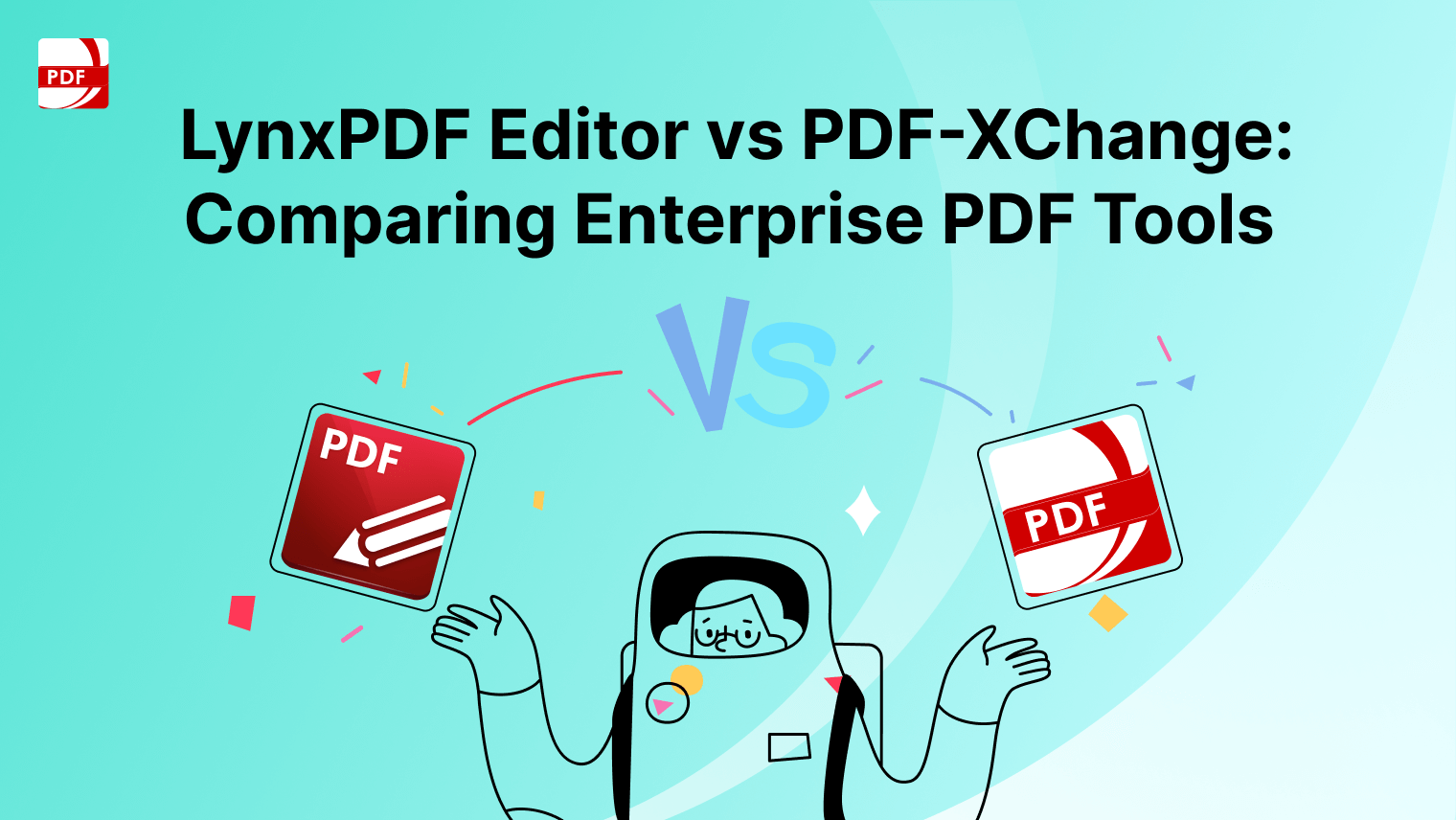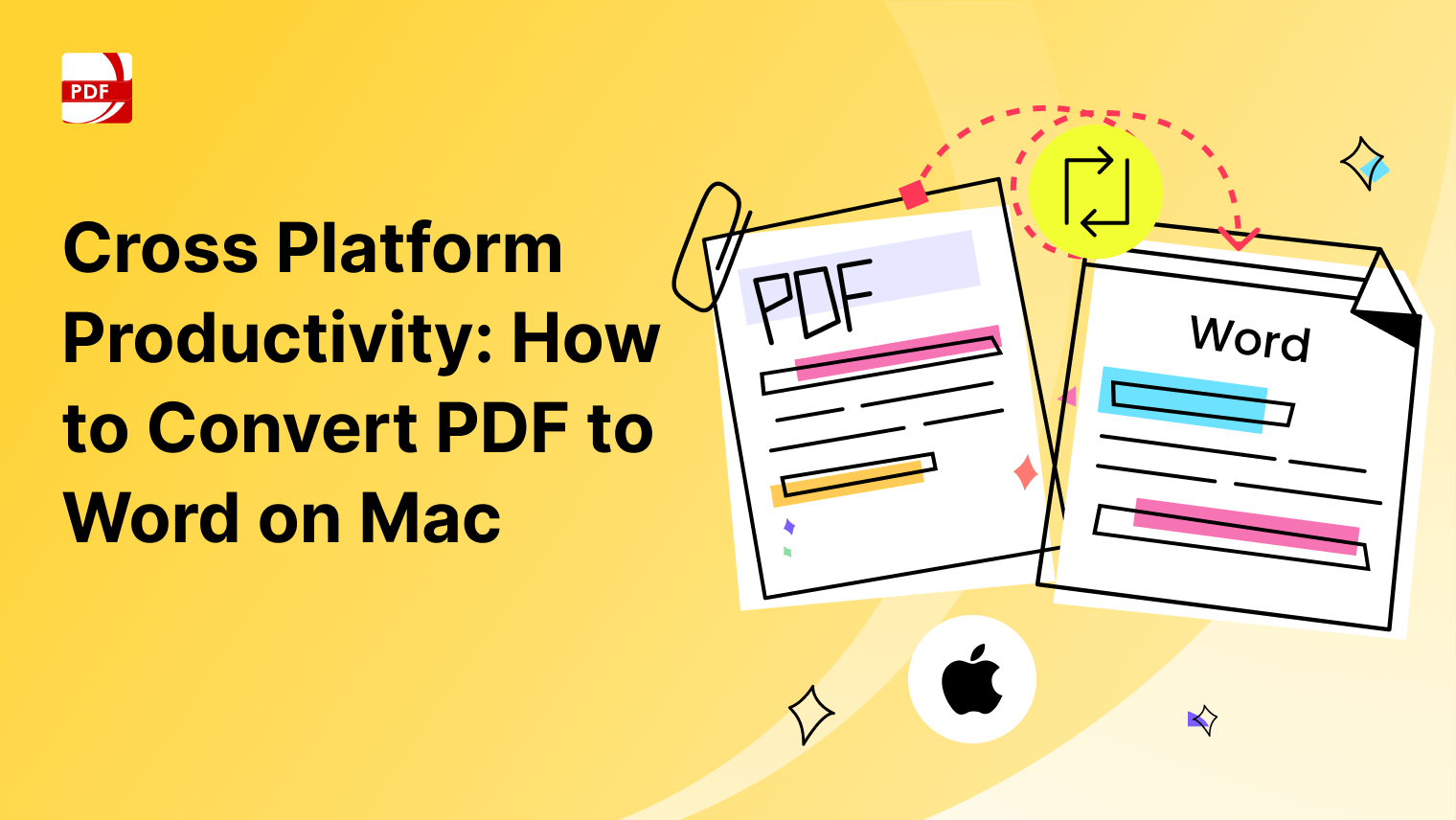IT teams often grapple with the complexities of managing a myriad of user credentials. This management involves ensuring password strength, monitoring for unauthorized access, and updating credentials regularly—a process that can be both time-consuming and prone to errors.
Key Benefits of SSO for IT Teams
Features of LynxPDF Editor's SSO for IT Teams
These features make LynxPDF Editor’s SSO an essential tool for IT teams, providing robust security enhancements, streamlined user management, and valuable insights into user behaviors and system security.
Integration with Identity Providers
- Support for Key Protocols: LynxPDF Editor's SSO feature supports major authentication protocols, including SAML (Security Assertion Markup Language), OAuth, and OpenID. These protocols are fundamental for ensuring secure, streamlined integration with various identity providers.
- Compatibility with Leading Platforms: The system is designed to work seamlessly with widely-used identity management platforms such as Okta, Azure AD, and Google Workspace. This compatibility ensures that organizations can integrate LynxPDF Editor into their existing security frameworks without disruption.
Granular Access Controls
- Role-Based Permissions: LynxPDF Editor allows IT teams to implement role-based access controls, ensuring that users can access only the tools and data necessary for their roles. This capability helps in minimizing the risk of data breaches and unauthorized access.
- Flexible Configuration Options: The system offers flexible configurations that can be tailored to meet specific organizational policies and requirements. This adaptability ensures that the SSO implementation aligns with the enterprise's overall security strategy and operational needs.
Audit and Reporting Tools
- Real-Time Tracking of Login Activities: LynxPDF Editor’s SSO provides IT teams with the capability to track login activities in real-time. This feature is crucial for maintaining compliance with regulatory requirements and for ensuring the security of sensitive information.
- Detailed Reporting for Monitoring and Troubleshooting: The SSO system includes comprehensive reporting tools that allow for detailed monitoring and analysis of user activities. These reports are invaluable for troubleshooting potential issues, auditing access, and understanding usage patterns to further refine security measures.
How SSO Reduces IT Workloads
Single Point of Credential Management Single Sign-On (SSO) centralizes the management of user credentials, meaning IT teams need only manage a single identity per user across multiple applications and services. This consolidation significantly reduces the workload involved in creating, updating, and retiring user accounts, especially in large organizations with numerous systems.
Automated Onboarding and Offboarding With SSO, the processes of onboarding new employees and offboarding those who leave are streamlined. When a user is added or removed from the SSO identity provider, their access to all connected services is automatically updated. This automation prevents the manual task of updating each application individually, saving time and reducing the potential for oversight or errors.
Fewer Password-Related Support Requests A common issue for IT departments is handling requests for password resets and dealing with account lockouts. SSO reduces these problems by minimizing the number of passwords users need to remember. This decrease in password-related issues leads to a reduction in support tickets, allowing IT staff to focus on more critical tasks.
Enhanced Security with Less Effort SSO enables more robust security measures like multi-factor authentication (MFA) to be implemented across multiple applications seamlessly. With such protocols in place, securing an organization's data becomes less labor-intensive as these measures are centrally managed. IT teams can enforce strong security policies without the need for individual application configurations.
Compliance and Audit Efficiency SSO solutions often come with comprehensive logging and reporting tools that aid in meeting compliance requirements. IT teams can easily track access and authentication events, generate reports, and review logs through a centralized dashboard. This centralization makes it easier to audit and ensures compliance with various regulatory standards without the need for extensive manual tracking.
Reduced Complexity in User Access Management Managing access rights in an environment without SSO involves juggling multiple user profiles across various platforms. SSO simplifies this by providing role-based access control from a single interface. IT teams can assign, revise, and revoke permissions efficiently, which is less complex and time-consuming than managing permissions across disparate systems individually.
Overall, SSO not only enhances security and user experience but also significantly reduces IT workloads by streamlining user management and authentication processes across the enterprise.
Steps to Implement LynxPDF Editor's SSO
Implementing Single Sign-On (SSO) for LynxPDF Editor involves a series of steps designed to integrate it smoothly with your existing IT infrastructure. Here's a step-by-step guide to help ensure a successful deployment:
Steps to Implement LynxPDF Editor's SSO
Step 1: Assess Your Current Identity Management System
- Evaluate your current identity providers and authentication protocols. Ensure that they are compatible with SAML, OAuth, or OpenID, which LynxPDF Editor supports.
- Determine whether your identity provider (IdP), such as Okta, Azure AD, or Google Workspace, is already integrated with other applications in your environment.
Step 2: Plan Your SSO Integration
- Define the user roles and access requirements for LynxPDF Editor within your organization.
- Develop a rollout plan that includes a timeline, key milestones, and designated team members responsible for each phase of the implementation.
Step 3: Configure SSO Settings in LynxPDF Editor
- Log into your LynxPDF Editor administrative console.
- Navigate to the SSO configuration settings and enter the details from your IdP, such as the SSO URL, Entity ID, and X.509 Certificate.
- Set up the attributes mapping to ensure that LynxPDF Editor receives the correct user data from the IdP.
Step 4: Set Up Authentication Protocols
- Configure the necessary SAML, OAuth, or OpenID settings on your IdP to align with LynxPDF Editor’s requirements.
- Ensure that the security settings, like encryption and token validation, meet your organization’s security policies.
Step 5: Test the SSO Integration
- Perform initial testing in a controlled environment to verify that the SSO integration works correctly without disrupting existing workflows.
- Check for any authentication issues and ensure that all designated user roles can access LynxPDF Editor as expected.
Step 6: Train Your Users and IT Support Team
- Educate your users on how to log in using SSO and whom to contact for support.
- Train your IT support team on managing the new system, including how to handle login issues and monitor user activities.
Step 7: Monitor and Optimize
- After going live, continuously monitor the SSO system for any security issues or user access anomalies.
- Gather feedback from users to refine the process and make adjustments to improve performance and usability.
Step 8: Maintain Compliance and Security
- Regularly update your SSO configuration and security settings to keep up with evolving security threats and compliance requirements.
- Schedule regular audits to ensure that the SSO implementation continues to meet security standards and organizational needs.
By following these steps, you can effectively implement SSO for LynxPDF Editor, enhancing both security and user experience within your organization.
Real-World Applications for IT Teams
Implementing Single Sign-On (SSO) provides tangible benefits for IT teams by streamlining their responsibilities and improving overall system security. Here are some real-world applications of SSO that highlight its utility for IT teams in various sectors:
1. Healthcare Sector
In healthcare settings, IT teams manage access to multiple systems like electronic health records (EHR), billing software, and patient management systems.
SSO allows medical staff to quickly access these tools with a single set of credentials, reducing the time spent on login procedures and increasing the time available for patient care. This setup also ensures compliance with strict privacy regulations such as HIPAA, as IT can more easily monitor and control access.
2. Educational Institutions
Universities and schools utilize numerous applications for administration, student services, and learning management systems (LMS).
SSO simplifies the process for students and faculty by providing a single point of access, reducing the administrative burden on IT teams. It also helps in swiftly managing changes in user roles, such as transitioning students from enrolment through to alumni status.
3. Corporate Environments
In corporate settings, employee turnover requires prompt updates to access rights. SSO facilitates the rapid onboarding and offboarding of employees by centralizing control over user accounts.
This reduces the risk of security breaches due to inactive or unauthorized accounts and decreases the workload on IT teams responsible for updating user access across multiple platforms.
4. Financial Institutions
Banks and financial services manage sensitive data and require robust security measures. SSO enhances security by minimizing password fatigue and enabling more stringent authentication processes like multi-factor authentication (MFA).
IT teams benefit from reduced incidences of password-related breaches and a streamlined process for implementing security policies.
5. Government Agencies
Government entities often need to adhere to strict regulatory requirements regarding data access and security. SSO helps IT teams manage these requirements more efficiently by providing tools for real-time monitoring, access logs, and detailed reporting.
This is critical for audits and maintaining compliance with regulations like GDPR or FISMA.
6. All Sectors
In case of a security breach or data loss, having an SSO system can simplify the recovery process. IT teams can quickly revoke compromised credentials and restore access to essential applications, minimizing downtime and ensuring business continuity.
7. Technology Companies
For companies in the tech sector, where employees frequently use a range of software tools, SSO improves productivity by reducing the cognitive load on users.
IT teams benefit from fewer help desk calls related to password resets and account lockouts, allowing them to focus on more strategic IT initiatives.
These real-world applications show how SSO can be effectively utilized across different sectors, demonstrating its versatility and critical role in enhancing IT operations.
Why Choose LynxPDF Editor for SSO Integration?
Choosing LynxPDF Editor for Single Sign-On (SSO) integration offers a range of benefits that enhance both security and user efficiency, making it an appealing choice for organizations looking to streamline their document management processes.
Here’s why LynxPDF Editor stands out as a robust option for SSO integration:
Robust Compatibility with Leading Identity Providers
- Wide Support for Authentication Protocols: LynxPDF Editor supports key industry-standard protocols such as SAML, OAuth, and OpenID Connect.
This wide-ranging support ensures seamless integration with a variety of identity providers (IdPs), including Okta, Azure AD, and Google Workspace. By aligning with these widely-used IdPs, LynxPDF Editor facilitates a plug-and-play SSO setup that minimizes the need for custom configuration.
Advanced Tools for Secure PDF Management Paired with Seamless Access
- Enhanced Document Security: LynxPDF Editor doesn’t just simplify access; it enhances the security of your PDF documents.
Features such as encrypted PDF files, redaction capabilities, and digital signatures ensure that sensitive information remains protected. With SSO, these security features are complemented by the simplified access control, providing both security and convenience. - Streamlined Workflow: The integration of SSO in LynxPDF Editor allows users to access their PDF editing tools without repeatedly logging in, streamlining workflow efficiency.
This seamless access reduces login fatigue and allows users to focus more on their tasks rather than on managing multiple passwords.
Reliable Customer Support to Assist with SSO Implementation
- Dedicated Support Team: LynxPDF Editor provides dedicated customer support to assist organizations during the SSO integration process. Whether you encounter technical issues or need guidance on best practices for deployment, the support team is equipped to ensure a smooth and successful implementation.
- Resource Availability: Along with direct support, LynxPDF Editor offers extensive documentation and online resources to help IT teams understand and implement the SSO functionality effectively. This includes setup guides, FAQs, and troubleshooting tips, providing an invaluable resource for both new and existing users.
By integrating SSO with LynxPDF Editor, organizations benefit from a combination of robust security features, enhanced user experience, and comprehensive support.


